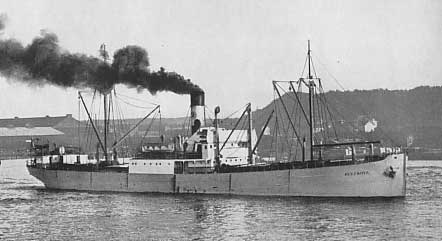Sound of Mull and Aviemore – Cold but Gold! - Pt2
After our long drive north and a day off where we toured the Tobermory distillery, we loaded our gear onto Peregrine and motored out of the harbour towards our first dive the well-known Hispania. The first dive of the day was the Hispania, which is a 70 meter long steamboat built in Belgium in 1912.
She was seized by the French in 1940, the crew were allowed to return home apart from the captain and the engineer. After the war she was returned and became a cargo ship. In 1954 she went on her last voyage for Varbeg from Liverpool but due to bad weather she aimed to shelter the storm in the Sound of Mull. Sadly for the crew, due to bad visibility she crashed into Sgeir Mor (great semi-submerged rock). She took on water quickly, however all the crew escaped bar the captain who chose to remain aboard as she slipped away.
Now the Hispania rests with the bow at 24m and the stern at 32m. She is heavily covered in soft corals and has made one of the best man-made reefs in the Sound of Mull.

Hispania
The second dive of the day was the Pelican. Another wreck with a bit less of an exciting tale. She was a cargo ship launched in 1850 and was mainly used as a ferry by the David Macbraynes shipping company. Towards the end of her years she was used to store coal but in 1875 a strong storm broke her mooring and she slipped under the seas never to be see the surface again.
She is not a madly popular dive site due to how much she has degraded over the years and how silty the site is, but the wall where she rests is where I spent my time focusing since it is a haven for all sorts of life.
Some finds from the day were Sea Hares which are an under loved species in my opinion. The one that I captured below was in the middle of breeding at the time and adds to the interest of this fascinating species.
The scallop is always a species that has amazed me with the mess of eyes and sensory tentacles pocking out. With my macro lens I could really explore close up to these features.
Rock Gobies are always a flighty species but if they do hold still for a few seconds they have some fantastic patterning on their scales.
One last species I found was this Flabellina. The Sound of Mull has many species and this would be one of many I would find on the trip. Spot the Nudibranch is always a fun game to play!
The week was looking good and it only got better as it went along!